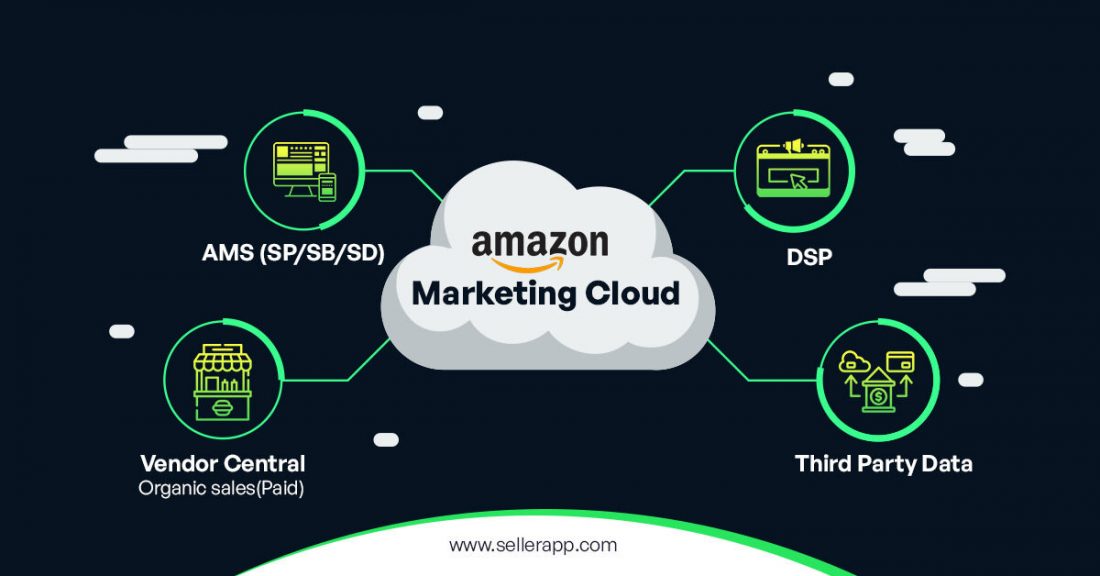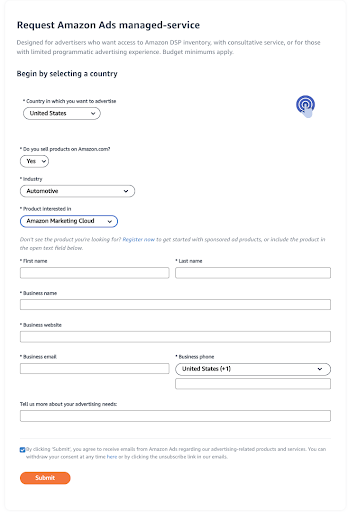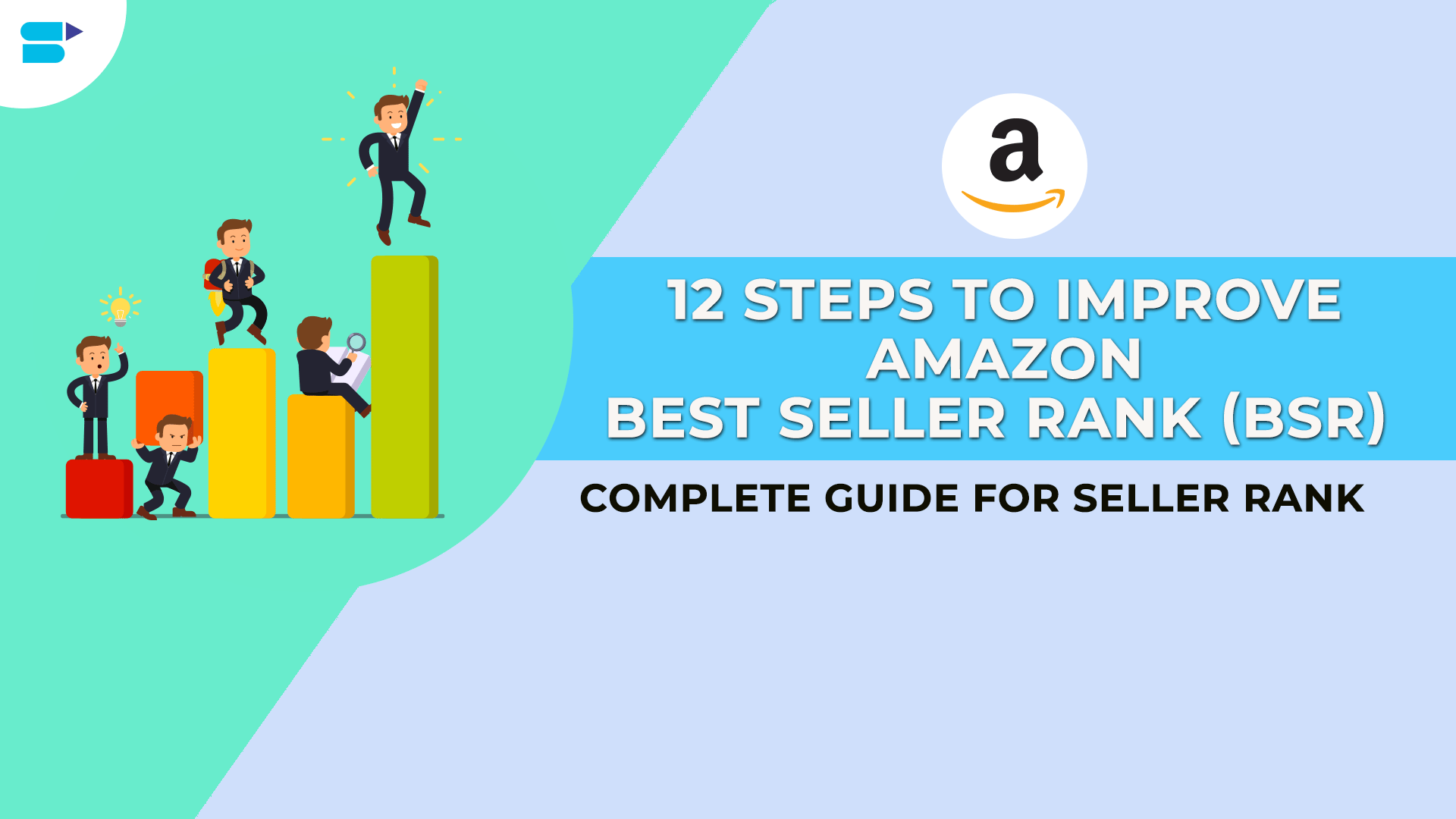Amazon Marketing Cloud (AMC): A Guide to Data-Driven Advertising

The primary goal of any e-commerce brand owner or Amazon advertiser is to build awareness and drive sales.
However, with the massive shift in consumer behavior and the deprecation of third-party cookies, advertisers across the globe are scrambled to find answers to the basic questions, such as:
- What’s the demographic of your most engaging audience?
- What location drives your maximum sales?
- Which media mix brings the most conversion for your brand?
Amazon Marketing Cloud (AMC) solves this challenge by providing detailed aggregated data solutions to advertisers.
This article will explain what Amazon Marketing Cloud is and how you can use it to drive data-driven business decisions.
A quick peek into the article:
- What is Amazon Marketing Cloud?
- How does Amazon Marketing Cloud work?
- How to register with Amazon Marktin Cloud
- Minimum Requirements to Use AMC
- How Advertisers Can Use Amazon Marketing Cloud
- Final Thoughts
What is Amazon Marketing Cloud?
In today’s day and age, data is everything.
For the past several years, advertisers have been measuring the success of their cross-channel campaigns through web cookies.
However, as browsers began to block third-party cookies, it became a struggle for advertisers to measure conversions across multiple channels and make data-driven decisions.
To address the challenge, Amazon launched the Amazon Marketing Cloud (AMC) in 2021 – a secure, privacy-safe cloud-based solution where advertisers can easily perform analytics across multiple channels and understand their customer’s shopping journey on and off Amazon.
The AMC report combines Amazon Ad Campaign data like impressions, clicks, and conversions and advertisers’ own data sets to give you a holistic view of campaign performance.
Recommended read: How can you effectively analyze Amazon Data over time?
How Does Amazon Marketing Cloud Work?

Amazon Marketing Cloud is designed to maintain end-users’ privacy, so it does not show user-level data. Instead, it groups the actions of 100 unique users and shows the aggregated data to the advertisers. It allows you to understand the customers’ journey while still protecting their private data.
With AMC, brands can get a deeper insight into audience behavior and measure the impact of their full-funnel marketing strategies.
To learn more about Amazon Marketing Cloud, watch this guide:
How to Use Amazon Marketing Cloud To Your Advantage
With countless amounts of data on AMC, it can get cluttered really quickly. We recommend establishing a business goal or identifying a problem first and then working backward to solve the problem through the AMC insights.
For example, let’s say you’re a fashion retailer planning to launch a new summer clothing line on Amazon. You can use Amazon Marketing Cloud to get access to the granular demographic data of past customers, most-searched keywords, buying behavior, etc. And with this information, create a data-driven product launch strategy that gets you in front of your target customers and brings in maximum sales.
Here are some of the insights you can get from Amazon Marketing Cloud:
- Audience analysis: Discover and segment your audiences based on behavior, preferences, and interests.
- Customer journey analysis: It shows what your customer’s journey looks like through awareness to consideration to conversion. With this information, you can make more data-driven strategies for your advertising campaigns and maximize sales.
- Media-mix analysis: Understand the incremental value and effectiveness of different advertising channels (DSP + Sponsored Ads) and their combinations.
- Purchase behavior analysis: Identify the triggers that lead customers to buy your products.
- Full-funnel advertising analysis beyond Amazon DSP: Measure the impact of your advertising efforts across the entire funnel, from awareness to conversion across different channels.
Note: Initially, you can see the advertising data for the past 28 days. From then on, the data is stored in AWS for up to a year, and you can analyze the data any time you want. Amazon Marketing Cloud has also recently integrated with Sponsored Brands. It gives you several benefits, including:
- Audience reach analysis: Measure the reach of different Sponsored Brand campaigns.
- Ad-attributed conversions: Analyze the total brand purchases and sales from Sponsored Brands ads.
- Keyword analysis: Identify high-performing keywords for Sponsored brand ads.
- Path to conversion: Understand the performance of Sponsored Brand ads in the customer journey.
Recommended guide: How to optimize ads with AMC and Amazon Ad Server?
How to Register With Amazon Marketing Cloud
If you fulfill all the requirements for Amazon Marketing Cloud, go to this page and start the application process.
First, select your country, fill out the contact form, and submit.

After that, the account manager from the Amazon Marketing Cloud team will contact you to set up your AMC account. It can take up to three to five business days.
Minimum Requirements to Use Amazon Marketing Cloud
Amazon Marketing Cloud is not accessible to everyone. Advertisers or brands need to have an Amazon DSP account to be eligible for Amazon Marketing Cloud.
Here are some requirements for using Amazon Marketing Cloud:
- You must have an executed Amazon DSP Master Service Agreement
- You must have planned campaigns or run campaigns on DSP in the past 28 days
- You need someone familiar with SQL database language to make queries in the AMC database.
- You need to have an AWS account.
- Amazon Marketing Cloud is available in 17 global marketplaces, including the United States, Canada, Mexico, Brazil, Germany, Spain, France, Italy, the Netherlands, Sweden, the United Kingdom, Saudi Arabia, the United Arab Emirates, Australia, India, Japan, and Singapore.
How Advertisers Can Use Amazon Marketing Cloud
Now that you understand how AMC works, let’s understand some tangible ways you can use AMC today:
Reach Broader Audiences
Use AMC to assess the total number of consumers who were exposed to your brands’ ads at different stages of the marketing funnel – from awareness to consideration to conversion.
It enables you to understand the impact of advertising efforts on different audience segments and refine strategy to maximize reach.
Also, create custom audience segments based on various criteria, such as purchase history, browsing activity, product affinity, and loyalty status, using AMC to improve your targeting.
Get New-to-Brand Insights
With AMC, you get clarity on new-to-brand customer insights for Sponsored Products and DSP campaigns.
For example, let’s say you have a Sponsored Product campaign with low ROAS. But when you analyze with Amazon Marketing Cloud, you see that 70% of sales on this campaign come from new-to-brand customers. Also, if you see the NTB customers have, on average, five repeat purchases, then suddenly, the campaign starts to look good.
Analyze Gateway ASINs
Amazon Marketing Cloud also enables you to identify ASINs that act as “gateway products” – meaning the products that shoppers purchase from the brand for the first time.
With this insight, you can allocate advertising budgets to these ASINs to generate maximum new-to-brand sales and acquire market share. Alternatively, you can pair them up with your new launches and increase sales through upselling.
Identify Top Amazon DMA (Designated Market Areas)
AMC can also help you identify the designated market areas from where your products get the maximum number of repeat purchases from new-to-brand customers.
Launch targeted Amazon DSP campaigns in these regions to expand the reach and generate more new-to-brand customers. It increases ROAS and reduces customer acquisition costs in those regions.
Analyze Conversion Rates
Amazon Marketing Cloud provides a more transparent way for you to analyze the impact of different ad campaigns on conversion rates with the help of custom attribution models.
For example, let’s say you’ve seen that running a combination of Product Targeting ads and Sponsored Display ads generates a significantly higher conversion rate than using either campaign type alone. You can use this information to devise a comprehensive ad strategy to increase sales without wasting ad budget on other types of campaigns.
Difference Between Amazon Marketing Cloud and Amazon DSP Reporting
Now that we’ve explored different use cases of AMC, let’s delve into a comparison between the reporting feature for two prominent tools, Amazon Marketing Cloud (AMC) and Amazon DSP
| Amazon Marketing Cloud Reporting | Amazon DSP Reporting |
|---|---|
| Can report on cross-channel media performance | Can report on media performance of ads bought through Amazon DSP |
| Complements the reporting capabilities available in Amazon DSP | Provides pre-aggregated standard metrics |
| Reports are outputs of SQL query-based analysis | Reports are delivered via Amazon DSP console on-demand or through API |
Final Thoughts
Amazon Marketing Cloud is an exciting update for brands, whose advertising strategy involves a mix of multiple platforms and channels, such as Sponsored Ads and Amazon DSP.
However, If you’re an advertiser willing to use easy-to-understand marketing insights, SellerApp’s 360-degree marketplace platform can be the right solution for you.
With this platform, you can manage your inventory, optimize your listings, run profitable ads, and reach new customers across multiple channels.
Not just that, armed with seasoned PPC experts, SellerApp also helps you achieve your advertising goals and scale your business.
Schedule a demo today and take the first step toward business success.
Additional read:
How does AmazonAI review summaries work?
What Is the RMA Number on Amazon?
7 Tips for Better Amazon Copywriting











Mike Kimbel
September 12, 2023Brilliant breakdown of AMC!
Clare Thomas
March 12, 2024Very happy to hear that.
Alexandra Froze
September 18, 2023Great read on AMC! Clear, concise, and packed with actionable tips.
Clare Thomas
March 12, 2024Thank you! Glad you found it helpful.
Howard Junior
November 17, 2023Fantastic breakdown of AMC! Super helpful insights for data-driven advertising on Amazon. Ready to level up my campaigns!
Clare Thomas
March 12, 2024Thank you! Glad you found the breakdown helpful